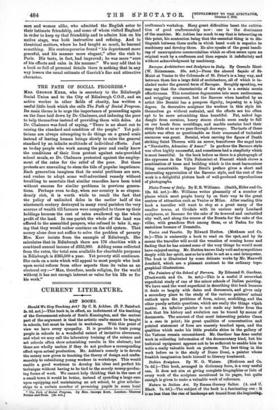Baroque Architecture and Sculpture in Italy. By Corrado Ricci. (W.
Heinemann. 25s. net.)—From the absurd facade of St. Moise at Venice to the Colonnade of St. Peter's is a long way, and between them lies a large field of architecture, all of which is in- cluded under the general term of Baroque. Roughly speaking, we may say that the characteristic of the style is a certain scenic effectiveness. This sometimes degenerates into mere restlessness, and wriggling ornament, but the Barocco when handled by an artist like Bernini has a pompous dignity, imposing to a high degree. In decorative sculpture the workers in this style let themselves go without restraint, and the effects are too often apt to bo more astonishing than beautiful. Fat, naked legs dangle from cornices, heavy stucco clouds seem ready to fall on our heads from mouldings, and marble curtains hurl their stony folds at us as we pass through doorways. The taste of these artists was often as questionable as their command of technical resources was great. Bernini, when carving the figure of Death striking Saint Theresa with an arrow, transforms the angel into a "Narcisetto, Adoncino d' Amor." In gardens the Barocco style was often highly successful, and sometimes had a simplicity which is most beautiful. In the book before us there is a photograph of the cypresses in the Villa Falconieri at Frascati which shows a combination of trees and building which is the most harmonious thing conceivable. Signor Ricci's preface gives a short and interesting appreciation of the Barocco style, and the rest of the work is a delightful picture book of well-produced reproductions of photographs.


































































 Previous page
Previous page